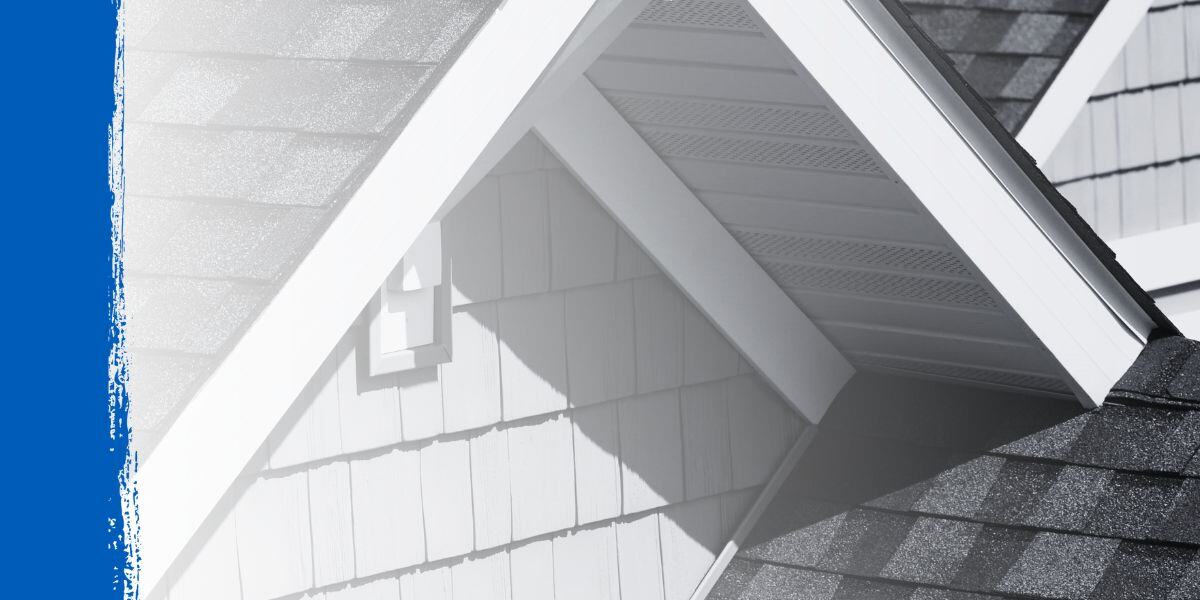Harsh weather can lead to major property damage, which in many cases in related to roofing. One common issue amongst homeowners is ice dams. These are ridges of ice that gather on the edge of a roof and stop snow from melting.
When they start to develop, numerous problems can arise, including as water leaks, structural damage, and costly repair work.
Key Takeaways:
- Ice dams cause water backup and leaks but can be prevented with insulation and proper ventilation.
- Ignoring ice dams can lead to water damage, mold and mildew growth, structural damage to the roof and attic, and increased energy costs.
What are Ice Dams?
Ice dams form when melting snow on the warmer parts of your roof refreezes at the cooler edges. As more snow melts, the trapped water can’t drain properly. Instead, it backs up under your shingles and eventually makes its way into your home.
This can lead to all sorts of problems:
- Water damage to your walls, ceilings, and insulation.
- Mold and mildew growth, thanks to the lingering moisture.
- Structural issues in your roof and attic over time.
- Higher energy bills, since wet insulation doesn’t work as well.
All of this can mean costly repairs, so it’s best to deal with ice dams before they cause serious trouble.
Preventing Ice Dams: Key Strategies
So how can you protect your home from ice dams? The whole process is multipronged.
Here’s how you can start:
Proper Attic Ventilation
Having a consistent temperature and proper ventilation in your attic can be extremely beneficial. Your ventilation needs to have adequate intake and exhaust vents, such as soffit vents at the eaves and ridge or gable vents at the peak.
To ensure that everything is functioning properly, inspect your vents and check for any blockages or damage that could restrict airflow.
Adequate Insulation
It is necessary to have good insulation in the attic because it stops heat from escaping and keeps roof temperatures even, which can stop ice dams from forming. For insulating attics properly, the U.S. Department of Energy has suggested these R-values depending on different climate zones:
- Zones 1-3 (e.g., Florida, Southern Texas): R30 to R49
- Zone 4 (e.g., Tennessee, Kentucky): R38 to R60
- Zones 5-8 (e.g., New York, Minnesota): R49 to R60
Assess your current attic insulation and add more if necessary to meet these standards. Consulting a professional can ensure correct installation and help avoid common mistakes.
Water-Resistant Barriers
Besides insulation, putting a good underlayment below your shingles provides another defense mechanism against water. Brands like CertainTeed and GAF manufacture self-sticking membranes such as WinterGuard® and WeatherWatch®, which create a waterproof barrier in vulnerable areas of the roof.
Here’s a comparison between these two:
|
Feature |
CertainTeed WinterGuard |
GAF WeatherWatch |
|
Primary Function |
Ice and water barrier |
Ice and water barrier |
|
Material |
Rubberized asphalt |
Rubberized asphalt |
|
Self-Adhering |
Yes |
Yes |
|
UV Resistance |
Good |
Good |
|
Typical Application Areas |
Eaves, valleys, chimneys, skylights, roof penetrations |
Eaves, valleys, chimneys, skylights, roof penetrations |
|
Thickness |
Varies by product (e.g., WinterGuard HT has a high-tack version) |
Varies by product (e.g., WeatherWatch G2X has a thicker, high-performance version) |
|
Warranty |
Limited lifetime warranty |
Limited lifetime warranty |
|
Special Features |
Some versions have a special sealant for strong adhesion |
Some versions have enhanced granule technology for slip resistance |
Roof Maintenance
Keeping up with roof maintenance is necessary to stop ice dams and different problems related to the roof. Check regularly so you can spot potential issues early, like broken or lost shingles, blocked gutters, or indications of damage over time.
Once there has been a lot of snow, it is important to get rid of this snow from trouble spots on your roof. This will help decrease the chances of forming ice dams. You might want to consider hiring an expert roof-cleaning service so that they can remove all dirt and moss before the first snowfall; this debris could keep moisture inside and cause the formation of ice dams.
If you need roofing protection, LS Building Products is your partner for wholesale building materials. Get the right protective gear and ensure that your roof is in pristine condition.
Frequently Asked Questions (FAQs)
What is an ice dam and how does it form?
Ice dams form when warm air in the attic melts snow on the roof, which then refreezes at colder edges, creating a barrier that traps water and can seep under shingles.
What are the potential consequences of ignoring ice dams?
Ignoring ice dam formation can cause water damage, mold growth, weakened structures, and higher energy costs due to damaged insulation.
How does proper attic ventilation help prevent ice dams?
Proper attic ventilation keeps temperatures steady, reducing the chance of ice dams occurring.
Why is adequate insulation important in preventing ice dams?
Good insulation prevents warm air from escaping, keeping the roof cooler and limiting ice dam formation.
What are water-resistant barriers and where should they be installed?
Barriers like WinterGuard® and WeatherWatch® protect against water and should be installed around eaves, valleys, chimneys, and skylights—common areas for ice dams.
What role does regular roof maintenance play in ice dam prevention?
Routine maintenance helps identify issues like damaged shingles or clogged gutters before they contribute to ice dams.
What are some examples of specialized ice and water barrier products?
Examples include CertainTeed WinterGuard® and GAF WeatherWatch®.
.png?width=98&height=67&name=Logo%20(13).png)
-1.jpg) How to Prevent Roof Ice Dams in the Winter" loading="lazy">
How to Prevent Roof Ice Dams in the Winter" loading="lazy">


-2.jpg)


